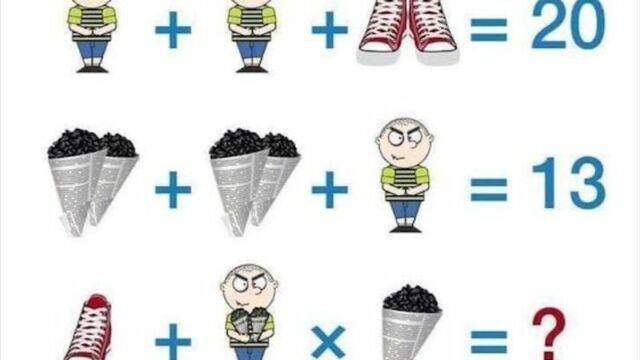Here's a maths problem that is a real head-scratcher. It's not the first time we've seen an equation like this pop up on Facebook or Twitter, however this one has a little twist. At first glance, this problem, which has been passed along by doctor and columnist Jimmy Mohamed, among others, seems quite simple at first. But it turns out it's a bit more difficult than you think... Try it out!
Discover our latest podcast
Maths problem
This maths problem is made up of simple equations. Each symbol corresponds to a value that must be found, in order to answer the final equation and find the missing result. Our advice: analyse the symbols and images carefully, and don't fall for any traps!
Allow us to explain...
Even if you probably have plenty of time to figure it out yourself while under lockdown, we'll give you the right answer if you've run out of patience. So beware: if you want to find the solution by yourself, stop reading! You have been warned.
To find the solution to this equation, you should analyse the different symbols in the image, as we recommended earlier. Thus, you can see on the first line that a pair of shoes corresponds to the value of 10. On the second line, you can see that the boy corresponds to the value of 5. And on the third line, that TWO cones correspond to the value of 4. So far, nothing too complicated.
Take a good look at the last line
It is the last line with which you have to be a little more careful. The first symbol is no longer a pair of shoes, but a single shoe, so we can deduce that the first value is 10/2 = 5. Next, there is the symbol of a boy, whose value is 5, but if you look closely, he is wearing a pair of shoes (10) and holding two cones (4), so that gives us a total of 5 + 10 + 4 = 19. The value of the boy on this line is therefore 19. Finally, there are not two cones left, but just one, which gives us 4/2 = 2. The cone, therefore, has the value of 2.
Prioritise multiplication over addition
You now have all the values, and you can proceed with your calculation, but beware of the last trap: the multiplication sign between the last two values, which always takes precedence over addition. You remember BODMAS/BEDMAS/PEMDAS, right?
Your calculation 5 + 19 x 2 could therefore be written: 5 + (19 x 2). The result is 43. Simple, no?















